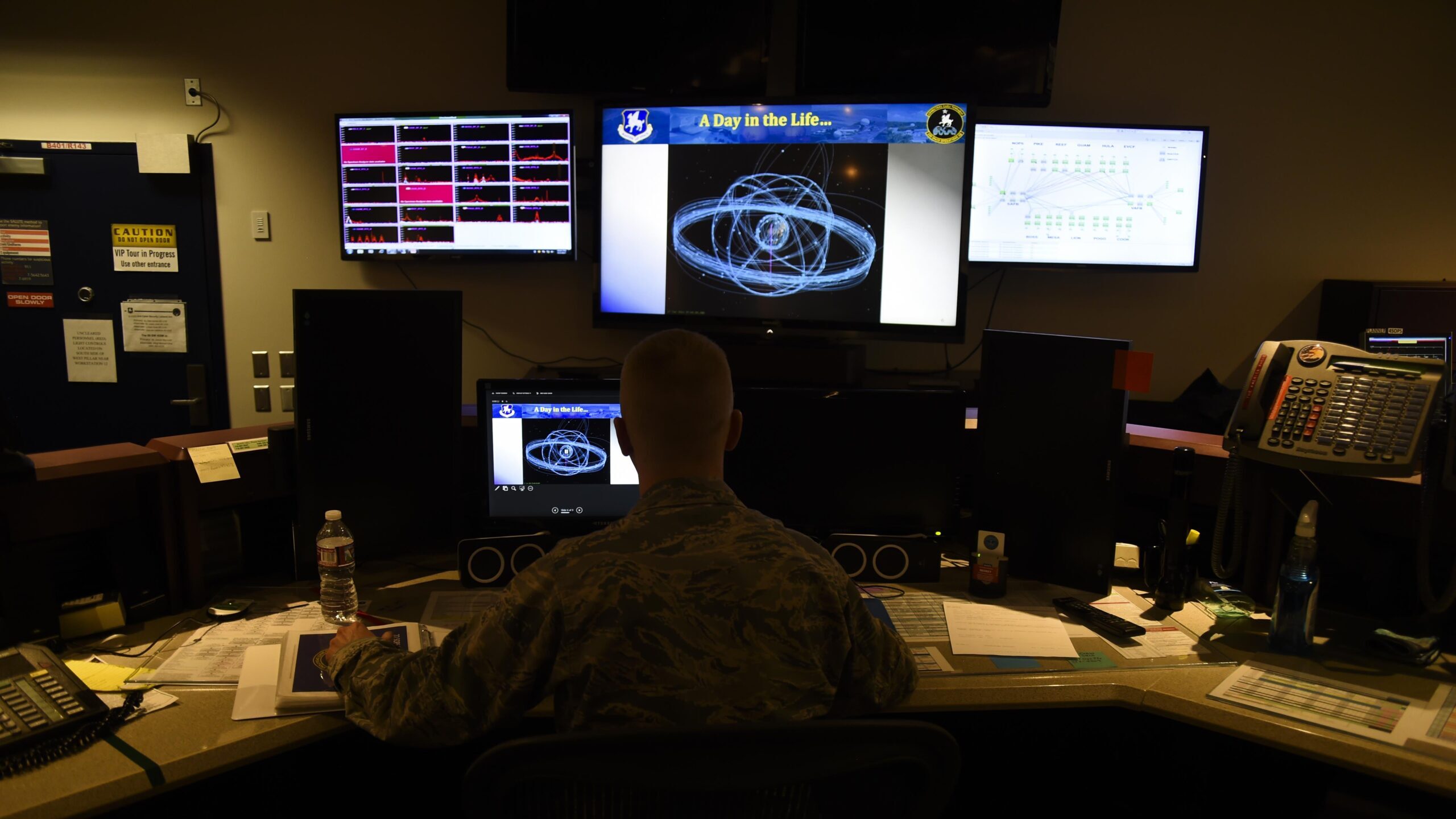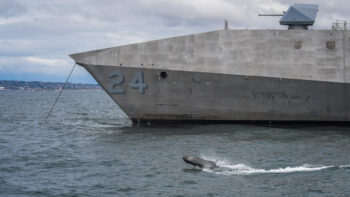
Space Force’s Delta 6 is responsible for cyber defense, but also operation of the aging Satellite Control System that manages US government satellites. (U.S. Air Force photo/Tech. Sgt. Julius Delos Reyes)
AFA 2022 — The head of the Space Force wants to build “indigenous software experts” that know how to write code as it strives towards being a digital and data-focused service.
Speaking at the Air and Space Forces Association conference today, Chief of Space Operations Gen. Jay Raymond said the Space Force is “working really hard” to develop digitally fluent Guardians that can do more coding through programs like Supra Coders, a three-month immersive coding school. He added there are currently “just shy of 100” Guardians that have gone through the program.
“And so one of the things that we’re working on is we have a program that we call Supra Coders and we’re trying to build indigenous software experts inside of our service…And then as we develop these Supra Coders, we’re looking at what’s the best place to put them,” Raymond said. “And so we’re putting them in software factories…We’re putting them in innovation cells in our deltas, to be able to give them the tough challenges to work on and see if they can write code to be able to help us, and there’s been some really good example of where we have made some progress embedding those folks with our operators.”
The Space Force revealed its “Vision for a Digital Service” [PDF] last May, which defined what the digital service would look like through four focus areas: raising the digital fluency of the entire force through its workforce, driving joint all-domain solutions through digital operations, having a data-driven digital headquarters and embracing digital engineering.
“And in our force design work that we did, we’ve actually done that all digitally and using model based systems engineering, came up with the digital models, both of the threat that we see and of the architecture design that we want to move to,” Raymond said today. “And then rather than just print out documents, we actually did the computer models and we handed that to industry and said here’s what we think.”
Beyond force design, Raymond added that approach could be used for requirements for acquisition to testing and training Guardians all using the same digital thread.
“That’s nirvana. We’re not close to that,” he said. “But we’ve taken…a good first step. We’ve done the digital design, we’re figuring out what the digital requirements process is. And I think it’s going to pay significant dividends for us as we move forward.”
Meanwhile, the Space Force is also looking at ways to reduce bureaucracy and “engineer” a culture of innovation that blends things from the other military services. To that point, Raymond said within the next couple of weeks the Space Force is hosting a “session on culture.”
“And what we’re going to do is figure out rather than jut see where the wind blows us when we meld these cultures together, we’re going to look at how do we purposely engineer the culture?” he said. “What do we have to do? Things like flattening the bureaucracy. What are those other things that we should do to engineer, to get the culture that we want spitting out the other side?
“Rather than just it evolve and emerge, we’re going to work to figure out how to best engineer where we are today to where we want to go.”






















